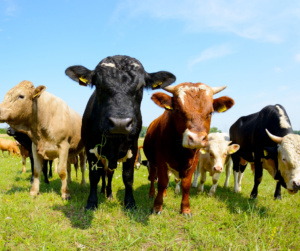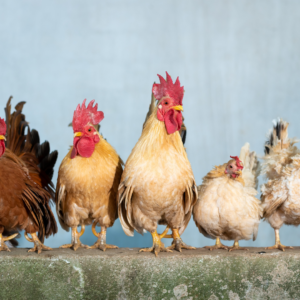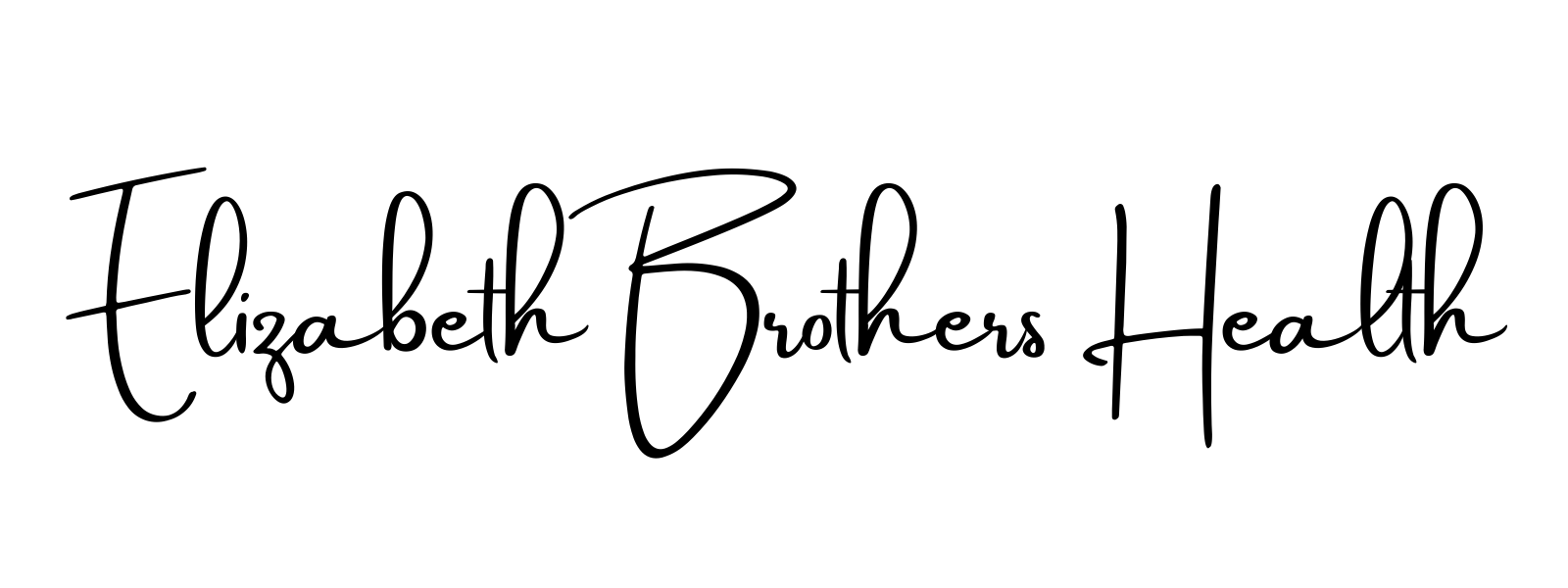This is going to seem like a VERY strange topic for someone who talks about sleep, but here’s the reality.
What we eat, how we eat, when we eat, everything around food is just one of the most important pillars of overall health. And the quality of our food plays a big role in this as well.
I have a separate post & video on organic fruits and vegetables (post here and video here) because that topic is worth its own focus, but the quality of the meat we consume is very important.
If you are going to invest in organic food, meat is a wonderful place to start.
Let me start with the idea of bioaccumulation.
If you’ve ever heard of the term bioaccumulation, this is something to consider when it comes to meat. This concept means that large animals (humans) eat smaller animals (chicken, pigs, cows), who eat food lower on the food chain (grains, slop, grass).

When animals, including humans, are exposed to pesticides, it’s up to our bodies to eliminate them. The pesticides we can’t get rid of tend to get stored in fat around the body.
If a cow is eating grass or corn with pesticides, those pesticides accumulate in the cow’s fat. So when we eat some of a cow, we’re exposed to that cow’s entire life exposure of pesticides.
This is how pesticides move up the food chain.
Choosing organic meat means the animals eat organic food, which lowers their level of bioaccumulation.
But it’s a lot more complicated than that.
Let’s Talk About Cows

Here’s something you probably know but didn’t know you know – cows are meant to eat grass.
I know, that seems like a silly thing to say. But let me tell you why I say it.
Several decades ago, when corn was grown to extreme excess in the US and they didn’t know what to do with all the corn (hello high fructose corn syrup!), someone realized that they could feed corn to cows. It was cheap, easy, and most importantly made them grow really fat, really quickly.
What’s not to love? Feed more cows for less money, and less growing time! It’s the best equation for capitalism.
So this became the norm. And massive factory farms were born. Where hundreds or thousands of cows were kept together, fed lots of corn, and then moved out into the world on top of our plates.
But here’s the important part – cows aren’t meant to eat corn. They’re meant to eat grass, not grain. When cows eat exclusively grain, they end up VERY unhealthy (kind of like humans, to be honest).
Cows who mostly eat corn end up getting sick way more often, they end up overweight, and the quality of the fat in their body goes down considerably. That means that when we eat those cows, we’re consuming poor quality meat; meat that is too high in fat, too high in the wrong type of fat (inflammatory) and cows that have been grown on a fuel that their body doesn’t know how to use.
Let’s talk about sick cows for a second (obviously everyone’s favorite topic). Not only do cows who eat mostly grain get sick more often (their immune systems just aren’t pulling their weight), but in factory farms with all of those cows in close proximity, disease spreads really quickly.
So what does that mean? Antibiotics. And lots of them.
Farmers can’t afford to have hundreds of cows die from disease, so they use a lot of antibiotics to prevent that. Did you know that the use of antibiotics in livestock is 82% of all antibiotic use in Canada?? There is a lot of discussion and debate around whether those antibiotics come along to directly impact the person who eats that meat, and the research is not quite clear on that. But the reality is that this antibiotic use absolutely is impacting us in other ways, such as microbial resistance and environmental impacts.
Where Does Fat Fit In?
I’ll do a deeper dive on fat at a later date, but here is something I just need you to know about fat and meat quality.
There are a bunch of different kinds of fat, but omega 3 and omega 6 you might have heard about. Omega 3 is an anti-inflammatory fat and omega 6 is a pro-inflammatory fat, meaning it causes inflammation in the body.
Cows that eat mostly grass have higher levels of omega 3.
Cows that eat mostly grain have higher levels of omega 6.
This means that when we eat cows that eat mostly grain, we get mostly omega 6’s. This can increase our risk of all sorts of chronic disease.
This example I’m giving you applies particularly to cows, but I could dive into similar stories with chickens and pigs and fish.

What To Look For When Shopping For Meat
Organic – for meat to be labelled organic, it needs to be grown in a certified organic farm and to be grown without the use of antibiotics. For small farms, this certification can be a very big hurdle. Sometimes it’s too expensive to get certified, and sometimes farmers need to be able to use non-organic tools on their farms (such as non-organic feed in a pinch, or medication for a sick animal). So just because meat isn’t labeled organic, doesn’t mean that it’s not very close to organic.
Pros – It would not have used antibiotics and the meat is generally much better quality than typical factory farms.
Cons – Organic meat means the feed that the animal eats is organic. This CAN (but doesn’t always) mean cows are fed organic corn. Organic corn isn’t going to make a much healthier cow than non-organic corn since cows are meant to eat grass.
Grass-fed – this is a term often seen in reference to cow farming. This is not a standardized term so anyone can use this phrase. The indication here would be that the cow has been raised on grass, but that can’t be known for sure.
Pros – grass-fed meat is healthier than factory farmed meat. There is a noticeable difference in the taste of grass-fed beef compared to grain-fed beef, so sometimes you can tell by the taste.
Cons – this can be a hard designation to confirm, so it’s possible you might just pay more for the same thing. Also, grass-fed doesn’t mean the animal has never used antibiotics.
Free range – this is a term typically used in relation to chicken or eggs. Free-range chicken usually means that chickens are allowed to wander when/where they want, and eat what they find. This is how chickens naturally eat, so this usually increases the quality of the chicken meat and/or eggs. Similar to grass-fed, free-range is not a protected label and there is no regulation around it.
Pros – generally free-range chicken and/or eggs are healthier with better quality (and less in total) fat and taste better.
Cons – this is also not a protected label, and they are generally more expensive than standard chicken/eggs.
What’s a person to do?
Get to know your local farmers! Local meat is the best meat. Most local farmers are more than willing to have a conversation with you about their farming practices, and if they aren’t open about it, that’s usually a red flag. See if you can find a local farmer and have a conversation with them about their meat quality and what they offer.
Is organic meat always the answer? Not necessarily! But being an informed consumer to decide what works best for you and your family IS always the right thing to do.
